Bruynzeel’s fabrieken Zaandam product catalog
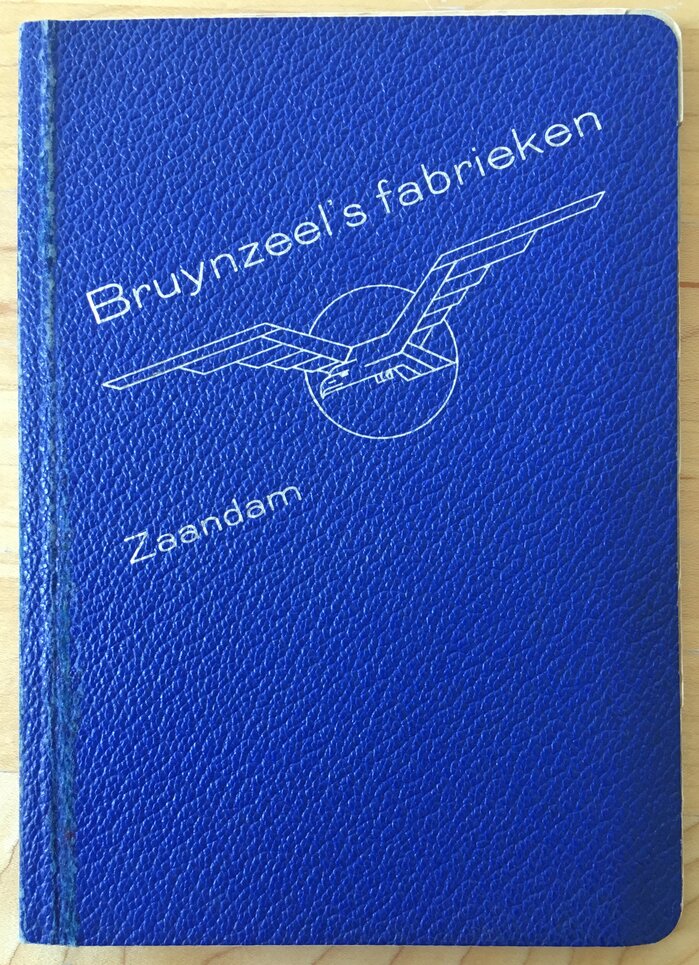
Photo taken by CJ Dunn at Letterform Archive. License: All Rights Reserved.


This catalog with items produced at Bruynzeel’s factories was issued in c.1932 (Invaluable Auctions), 1936 (Art Institute of Chicago), or c.1937 (eMuseum). The typography and design is by Piet Zwart (1885–1977), with the vignette on the cover drawn by Vilmos Huszár (1884–1960). The book measures 17.5×12.5 cm and is distinguished by round corners and a thumb index that allows the reader to quickly access the various sections. Most pages are printed in three colors: orange, blue, and black. Technical drawings are combined with photomontage. For the typography, Zwart used two sans serifs of wide proportions throughout the catalog: the bold Annonce Antieke and the light Kaart-Antieke.
Both typefaces were available from Typefoundry Amsterdam. Annonce Antieke originated at the punchcutting company Wagner & Schmidt in Leipzig and also went under various other names, including Aurora-Grotesk V breitfett at Weber. Amsterdam issued their version around 1913 (and again in 1955, then as Vette Annonce). Hans van Maanen digitized Annonce in 2006 for Canada Type. I believe that Kaart-Antieke is a version of Inland’s Litho Gothic from 1910/1911, but due to a lack of comprehensive samples, I can’t say for sure. Zwart famously used Kaart-Antieke for his never officially published essay about modern typography called “Van oude tot nieuwe typografie”. Florian Schick’s Trio Grotesk is a digital interpretation based on that use.
C. Bruynzeel & Zonen was founded in 1897, by Cornelis Bruynzeel sr. (1842–1901) and his two sons Willem (1873–1918) and Cornelis jr. (1875–1955). The company initially produced wooden floorboards, planing products and, by 1911, school desks. After the steam carpentry plant de Arend (“The Eagle”) burned down in 1919, the company relocated from Rotterdam to Zaandam in 1920. There, they built three specialized factories: one for doors, one for floorboards, and a planing mill. In the 1930s, Bruynzeel branched out to other product groups such as cabinets and pencils.
In 1939, Piet Zwart designed the company’s first kitchen. Already before, Bruynzeel commissioned modernist architects and designers like Jan Wils and Bart van der Leck – who, like Huszár, were founding members of De Stijl. Both Zwart and Huszár worked for Bruynzeel over a long period of time, see for example these catalogs from the 1960s. With the reconstruction after World War II, Bruynzeel products were in great demand. By 1965, the company had twenty-eight factories in fourteen countries, employing a total of 12,000 people. The factories in Zaandam were decommissioned in the 1970s, and broken down in 2016. The company is still in business, after more than 125 years, with separate branches for kitchens, home products, and storage.
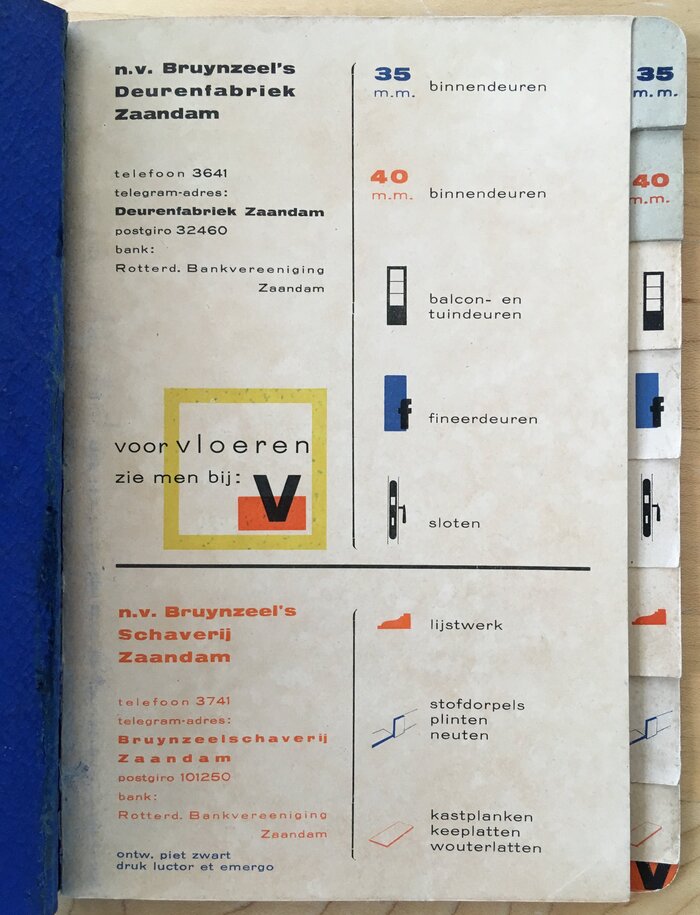
Photo taken by CJ Dunn at Letterform Archive. License: All Rights Reserved.
Index page with an explanation of the thumb index. The eight sections are: 35mm and 40mm interior doors; balcony and garden doors; veneer doors; locks, moldings; dust sills, plinths, buttresses; cabinet shelves, and the vertical French cleats and horizontal laths that hold them in place. At the bottom left, in all-lowercase letters: the names of the designer and the printer, Luctor et Emergo.
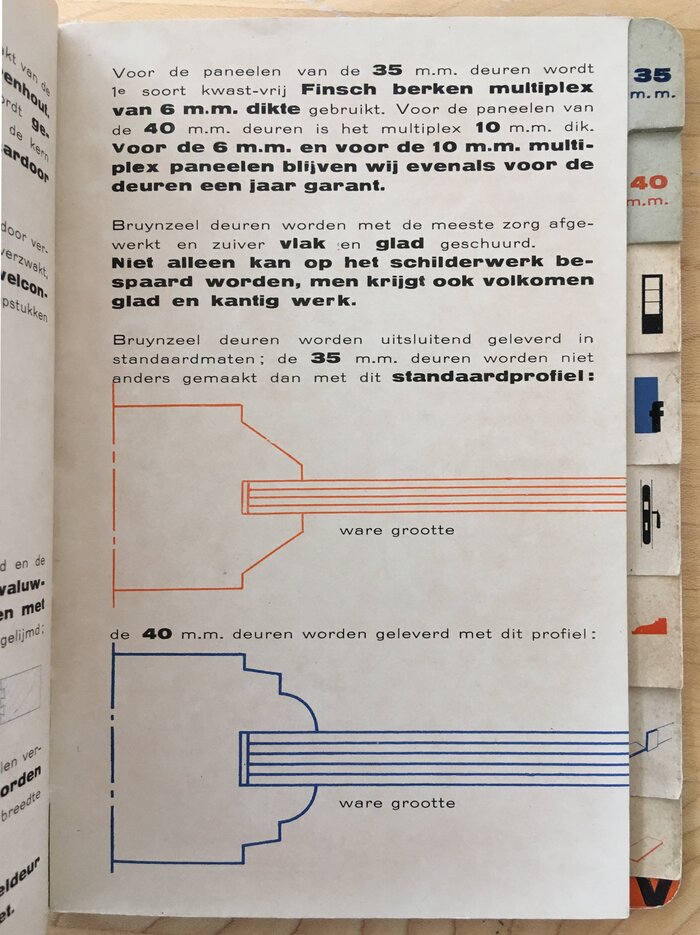
Photo taken by CJ Dunn at Letterform Archive. License: All Rights Reserved.
Door profiles are shown at actual size. Kaart-Antieke is mixed with Annonce for emphasis.
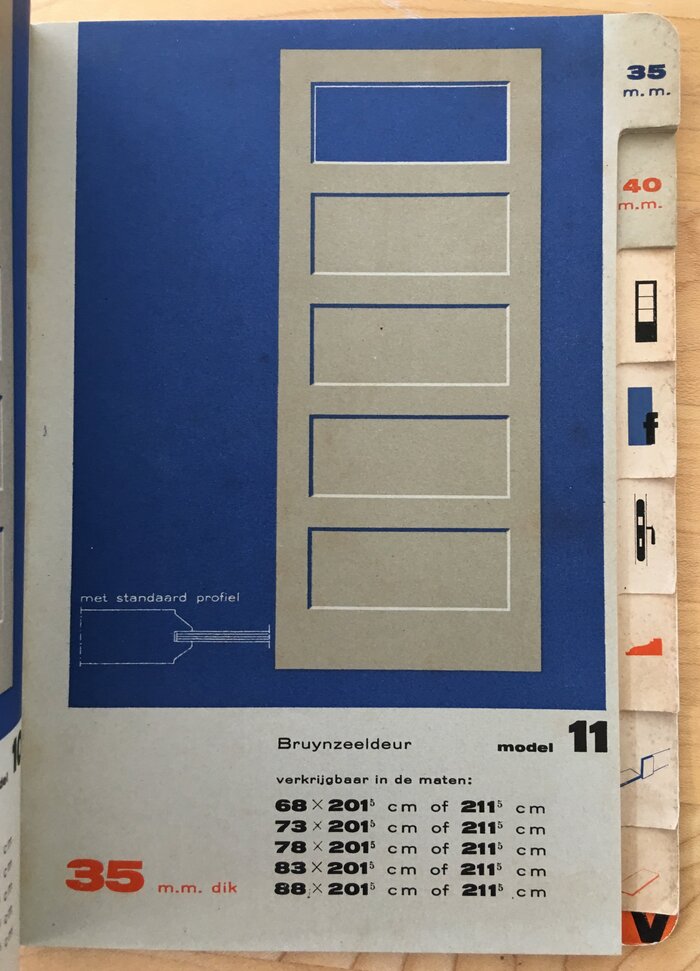
Photo taken by CJ Dunn at Letterform Archive. License: All Rights Reserved.
The Bruynzeel door model 11. Note the use of proper multiplication signs (×). The superscript 5 following the length (in cm) appears to indicate five millimeters.

Photo taken by CJ Dunn at Letterform Archive. License: All Rights Reserved.
More door profiles shown at actual size

Photo taken by CJ Dunn at Letterform Archive. License: All Rights Reserved.
Balcony and garden doors, models 83 and 84
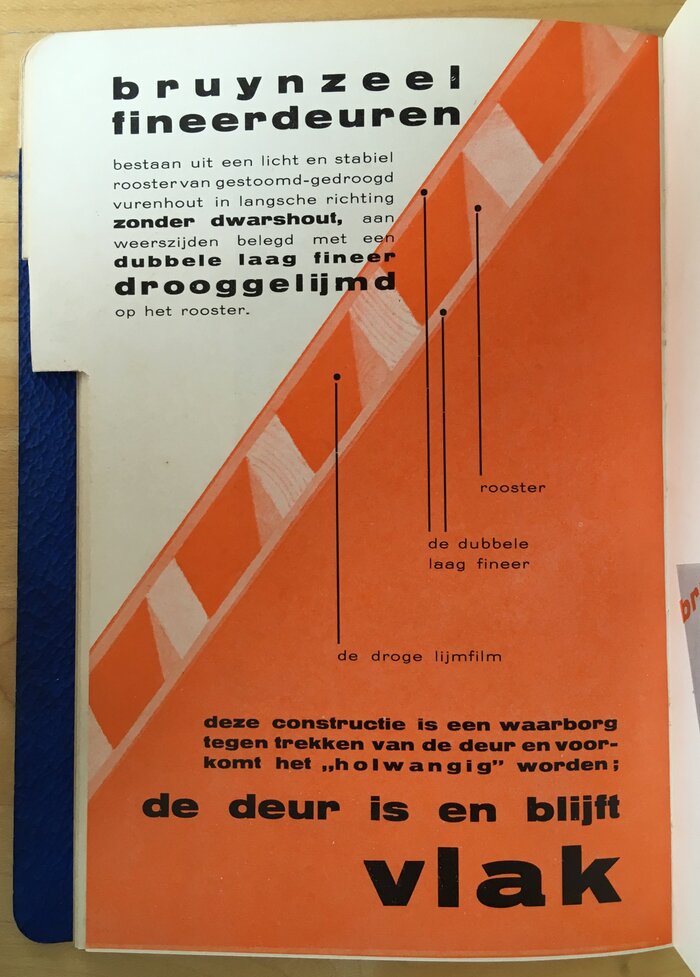
Photo taken by CJ Dunn at Letterform Archive. License: All Rights Reserved.
Veneer doors: “the door is and will remain level”
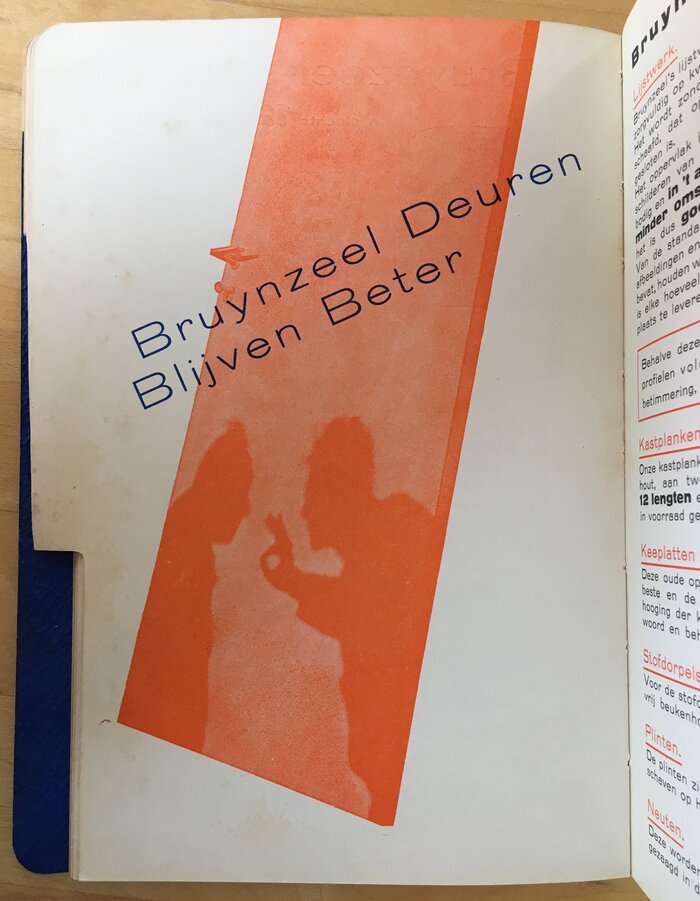
Photo taken by CJ Dunn at Letterform Archive. License: All Rights Reserved.
“Bruynzeel doors remain superior”
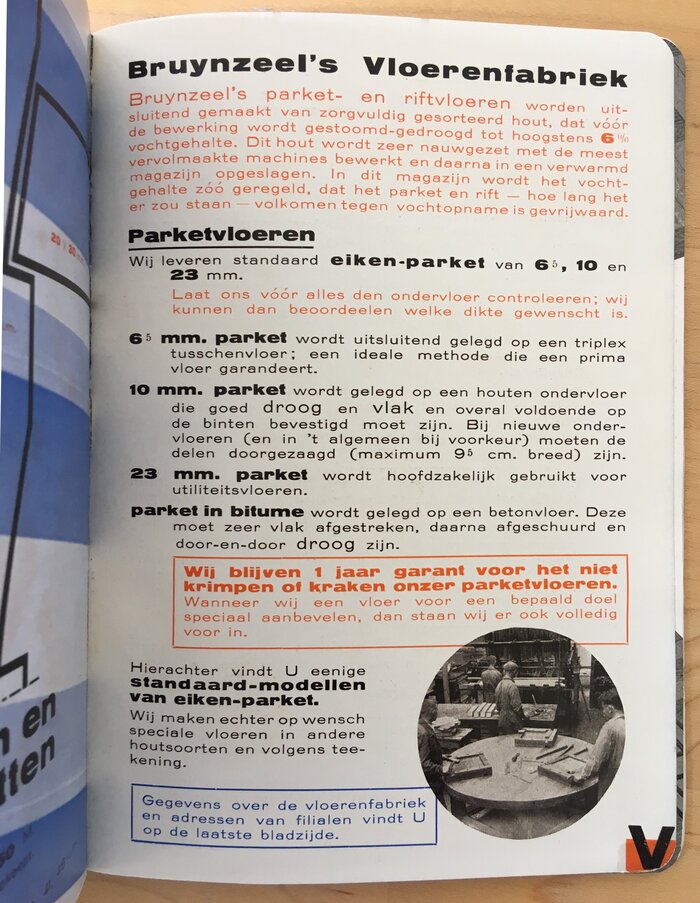
Photo taken by CJ Dunn at Letterform Archive. License: All Rights Reserved.
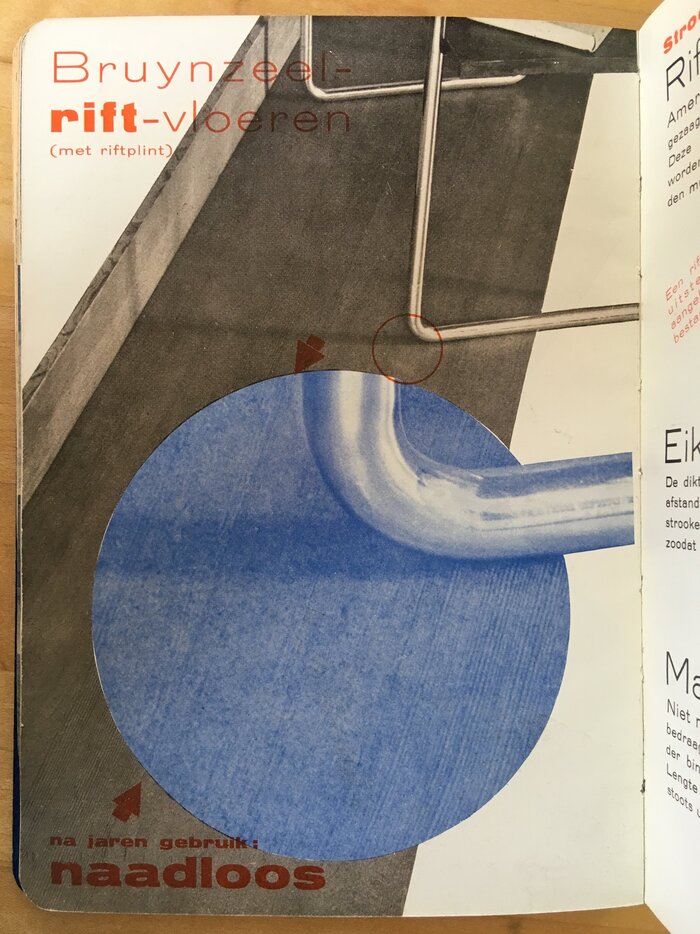
Photo taken by CJ Dunn at Letterform Archive. License: All Rights Reserved.
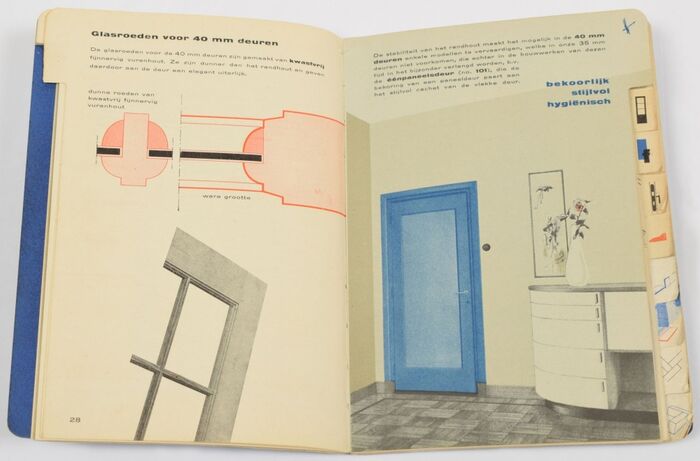
Source: www.invaluable.com License: All Rights Reserved.

Source: www.invaluable.com License: All Rights Reserved.
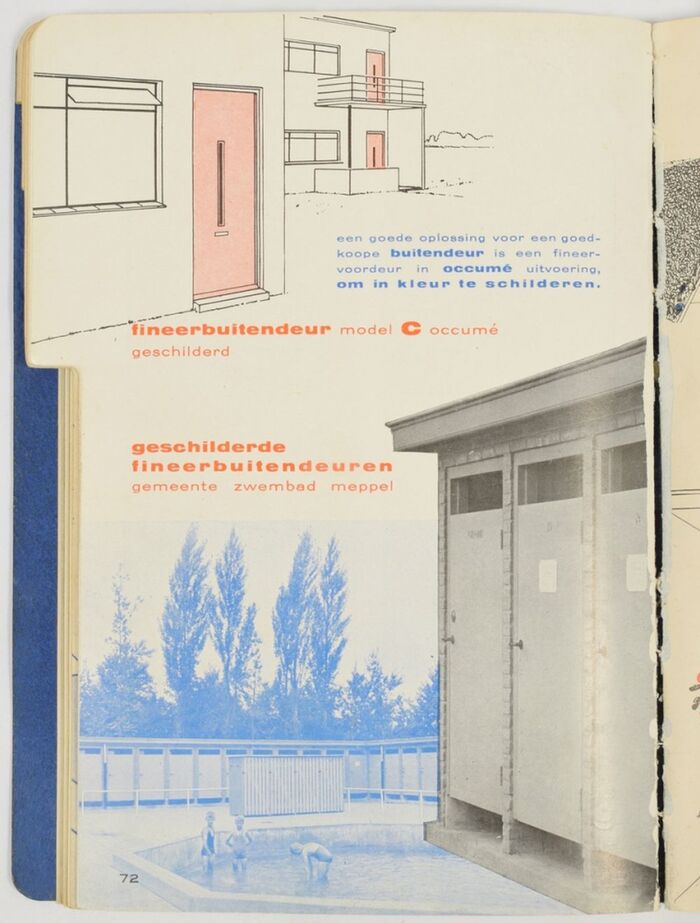
Source: www.invaluable.com License: All Rights Reserved.
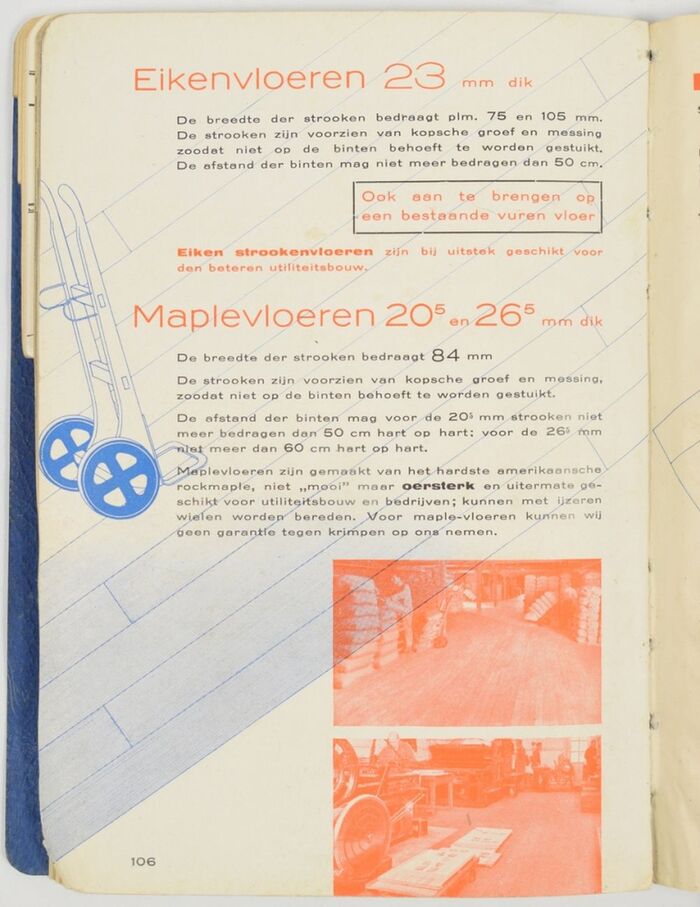
Source: www.invaluable.com License: All Rights Reserved.
This post was originally published at Fonts In Use